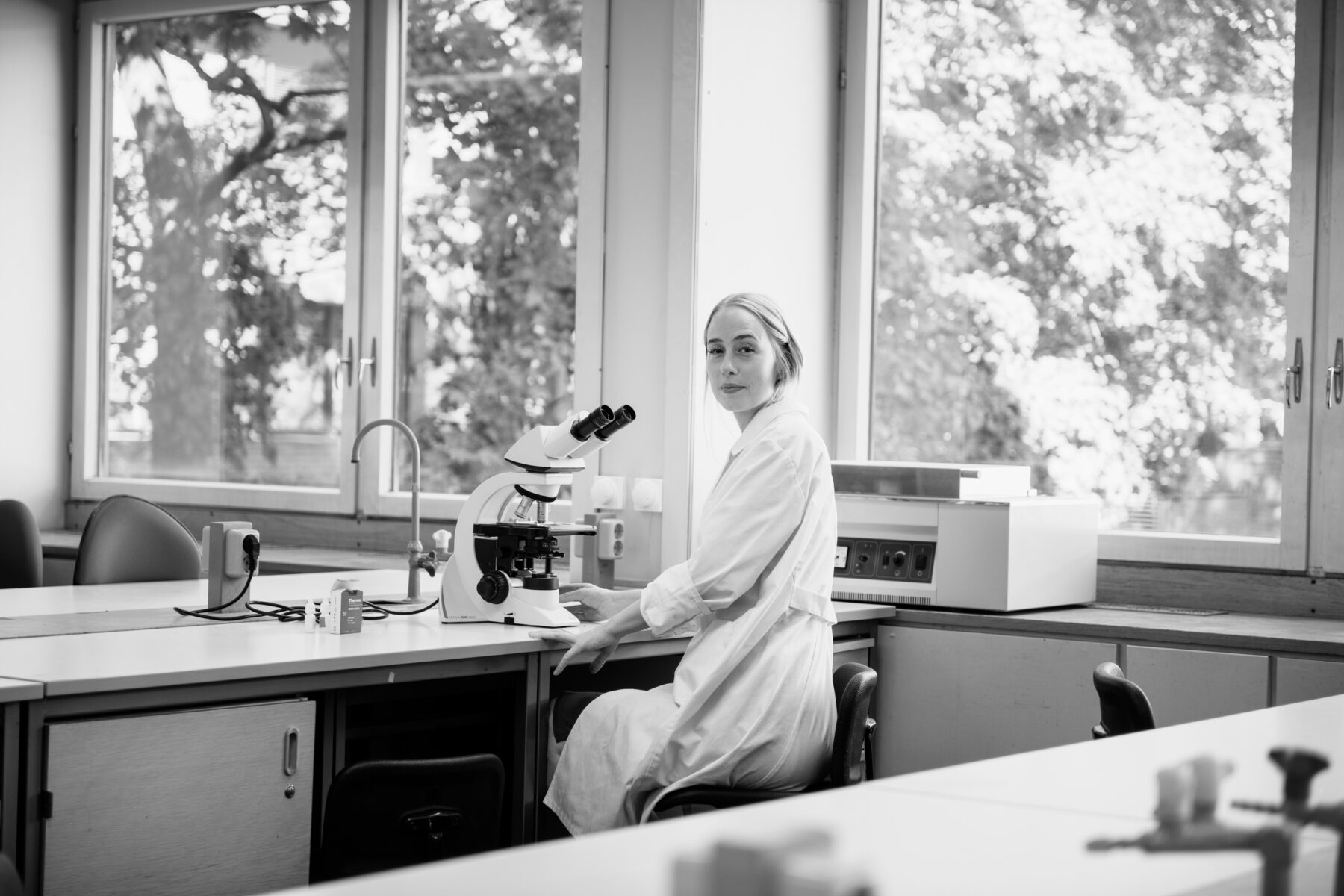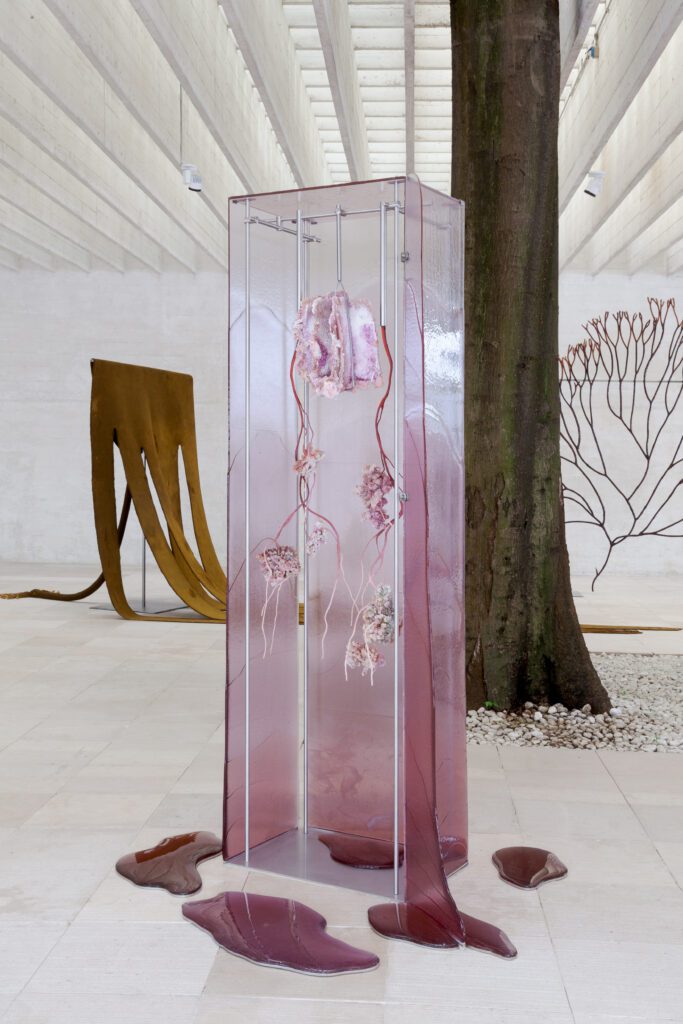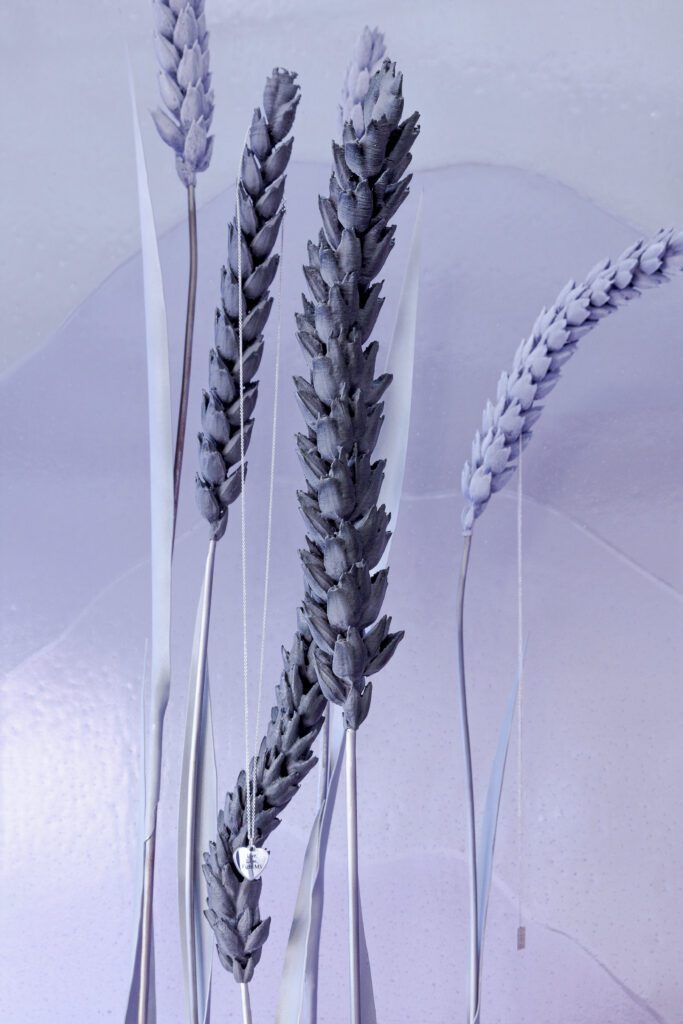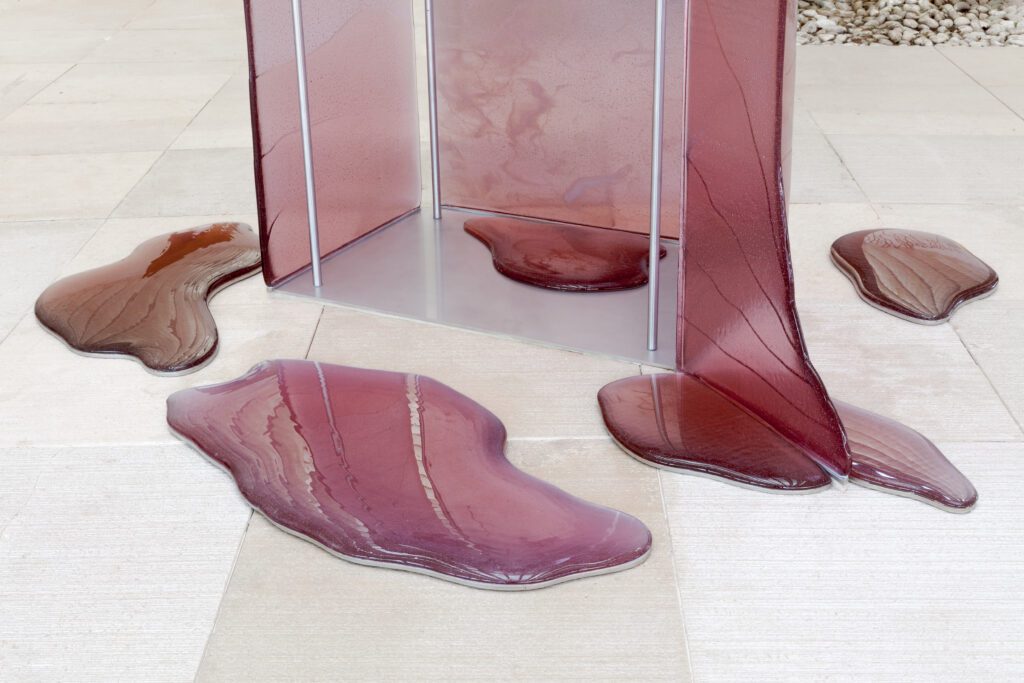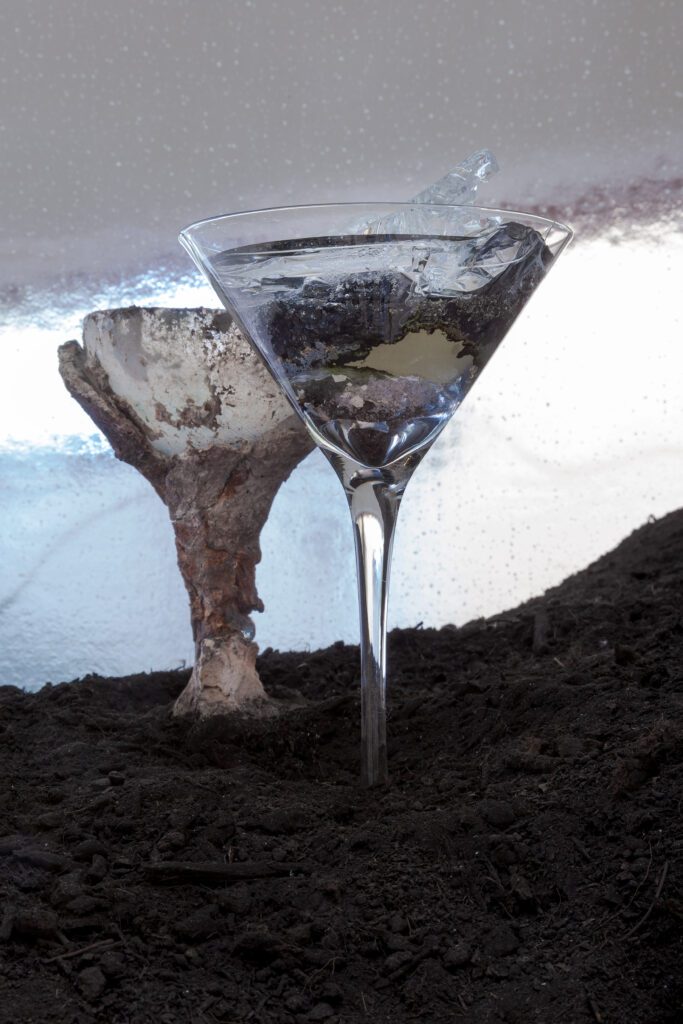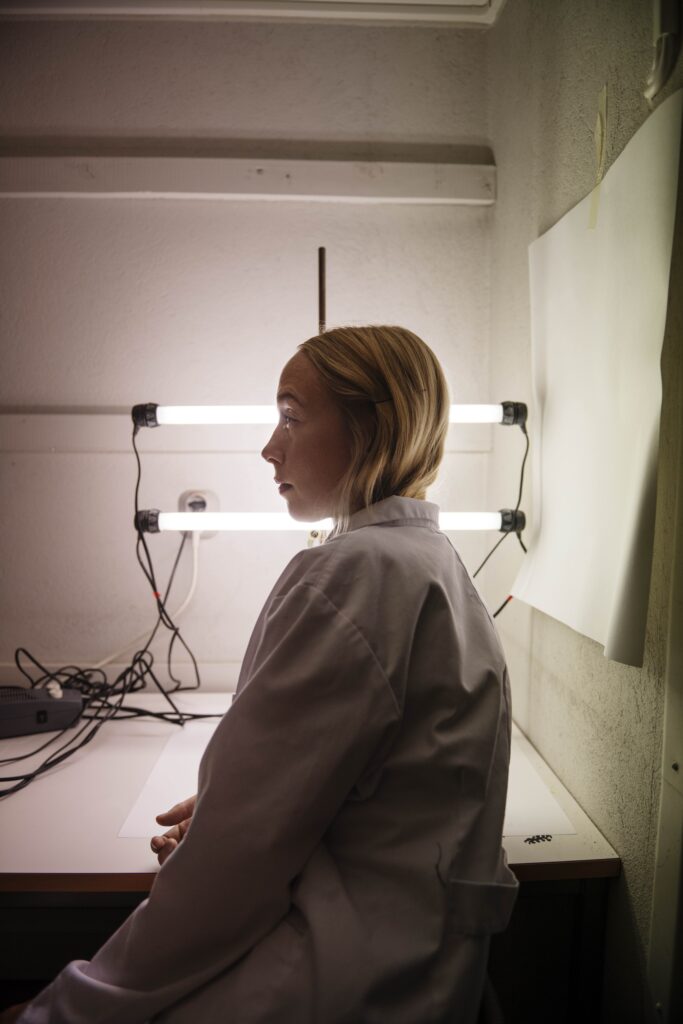The work of Ane Graff, one of the participating artists in this year’s Liverpool Biennial of Contemporary Art, is informed by feminist new materialism, with a focus on the human body as a system, health, and chronic illness.
Born in Bodø in northern Norway, Graff now lives and works in Oslo. As well as making art, and being mother to a young child, Graff is a research fellow at the Academy of Fine Arts in Oslo, where she works in close collaboration with the Department of Biosciences at the University of Oslo, lecturing on microbiology.
In 2019, Graff represented Norway at the 58th Venice Biennale. Her work, States of Inflammation, consisted of three large-scale glass cabinets with smaller sculptures of plants and coral inside. The project explored how all material bodies are affected by what they encounter, and, for humans, in particular, how pollution is causing the loss of bacteria that live on, and with, us. Accordingly, our bodies are changing into something new and unknown.
This year, Graff is exhibiting in the Liverpool Biennial from 20th March to 6th June 2021. This edition was originally scheduled to take place in 2020 but was postponed due to the COVID-19 outbreak. Norwegian Arts spoke to Graff about her varied research interests, her background and training, and life during lockdown.
States of Inflammation seems remarkably prescient, considering the Covid-19 pandemic. What did you have in mind at the time of making the work?
I’ve been interested in the human body as a system, or series of open-ended systems, functioning within other huge systems it cannot control, for a couple of years now. The body as bodily, corporeal material is irreversibly linked to the materiality of the world, and the topic of health and illness became apparent the more time I spent researching these issues. As the material meetings of our time are new, it meant that the effects would also be new; and what we have in our time is an increase in chronic inflammation and chronic disease. This causes an increased vulnerability to the outside world and, as we see today, to infection. The high mortality rate from Covid-19 may be a consequence of the high number of people having chronic low-grade inflammation as a precondition.The pro-inflammatory ‘inducers’ are new, arising as a result of the industrial revolution of the late 19th century. So, our bodies can be seen as a material, embodied memory – of past decisions of a whole epoch of ongoing industrialisation.
Have you made – or do you have any plans as yet to make – work in response to the pandemic?
I’m currently working on a show at OSL Contemporary here in Oslo, which deals with the same issues as States of Inflammation. The change in the works themselves, spurred on by the pandemic, is that the critique of the system is harsher and the emotions stronger. I am also developing new video work that deals more directly with the topic of infection.
You said at the time of the Venice Biennale that you doubted the Norwegian art scene “could ever feel ‘represented’ by a single artist, as it is such a rich scene with so many different and talented artists”. How did you try to overcome this?
I felt a stronger pressure to produce work that did justice to the topics I’m dealing with, works dealing with chronic disease that would be empathetic and non-offensive to those whose bodies are affected. The idea of representing a nation just belongs to a mindset I don’t identify with, so that pressure was easy to put out of my mind.
Which other contemporary Norwegian artists do you especially rate and why?
Mai Hofstad Gunnes’ video works are serene and thoughtful, Marie Askeland’s performances are the perfect mixture of raw emotion and feminist ideas, and Mercedes Mühleisen’s work is strange and dark in all the right ways.
Your work as a whole combines a broad range of research disciplines, from feminist new materialism to microbiology and chemistry. Where does this variety come from, and what drives you down the routes you take?
I was deeply impressed by curator Carolyn Christov-Bakargiev’s work with Documenta 13 and getting acquainted with the feminist new materialist ideas through her efforts was eye-opening for me. It felt as if I had been working on these issues intuitively for years, and finally I had found my tribe.
In 2018, you initiated a collaboration with the Department of Biosciences at the University of Oslo, where you participate in laboratory courses and lecture in microbiology. What is your background and training?
In addition to an MA from the Art Academy in Bergen, I hold an undergraduate degree in Psychology from the University of Oslo. Being familiar with the system and structure of research made it easier to dive back in to study microbiology and to go to open lectures in a range of disciplines. I am deeply interested in issues of health and illness and also spend whatever free time I have nerding away online.
Do you see the arts and sciences as separate or linked disciplines? What makes you want to bring them together?
For me it makes sense to make research-based work. But it’s not for everyone, and I deeply respect artists who purely focus on their medium. I believe artists and scientists can think well together and develop new ideas together, but I also honour the effort it takes to specialise within each field.
You work in sculpture and installation. How often is your work site-specific, and how does that affect the way you approach the conception and development of an idea?
I love to develop site-specific work, but it doesn’t happen that often. I get really excited when I can delve into a museum’s history and respond with the production of a new work.
Do you have a team of people to help you with the construction process of your works? How much do you learn about the different techniques and materials that you use?
When I started working with sculpture, I fortunately had access to different workshops at the Art Academy in Oslo. I hired an assistant who knew more than me about everything (she still does, her name is Stine Bråthen), and then we started experimenting with every material we could get our hands on. Making my own pigments from metals and minerals and plants was part of this process. It has truly been a matter of hands-on experience over the years.
You are part of this year’s Liverpool Biennial. What can you tell me about the work that you’ll be showing there?
I will show a large glass sculpture along with another piece that is in development. I’d rather not say too much, as I’m still rethinking everything as per usual. What I can say is that I’ve rarely encountered such an inspiring curatorial theme and vision as I have here. I am really looking forward to seeing the other art works [the curator] Manuela Moscoso has chosen. I am so excited to be taking part in such an interesting exhibition.
How have your ideas developed over the years?
I started out with a drawing practice. I made very detailed drawings of all kinds of organic matter. And that’s where my interest in materiality began. After a while, I really felt like I needed to expand my practice and move towards other media to be able to express a wider set of ideas. In 2015, I became a research fellow, and from then on I was able to delve into research on feminist materialisms, microbiology and science studies, etc.
As a mother of a young child, how has life been during lockdown? Are you still managing to make work?
I am so lucky to be mother to Lerke, who is now 9 months old. I have a very supportive partner, who helps me with both art production and Lerke, so together we’ve managed to fulfill our obligations. Life during lockdown was, as such, not very different for us (except, of course, the stress and worry of a new virus). We spend a lot of time together in our apartment anyway.
For more information visit anegraff.com
Top: Ane Graff (Photo: Ivar Kvaal)

